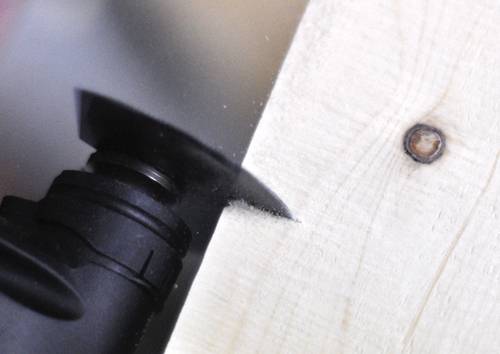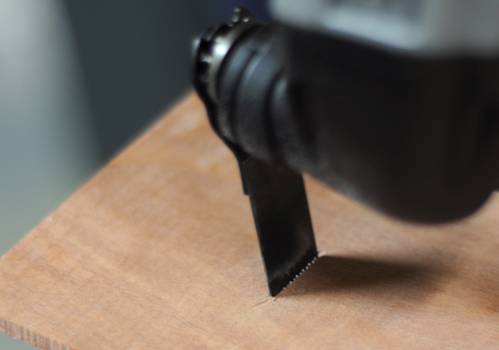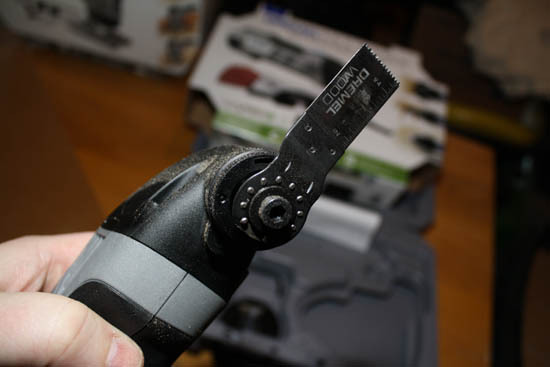This week, Curbly is giving away a Dremel Multimax oscillating tool kit, so we thought we’d try one out and share our thoughts. I’ve had a Dremel rotary tool for years, and even though I have a whole basement full of big, fancy power tools, I still reach for my Dremel for all sorts of tasks. So, I was excited to try out Dremel’s new offering, the Multi-Max. Whereas the original Dremel is a high-speed rotary tool, meaning it spins around at 12,000 RPM, the Multi-Max is an oscillating motor that vibrates back and forth really fast, sorta like the machines that doctors use to cut away plaster casts.
On first opening the case, I was pleasantly surprised that the machine is cordless, and includes two lithium-ion batteries and a charger. The basic kit includes three attachments: a hook-and-loop sanding pad, a flush cutting bit, and a wood/drywall blade. They attach with a nine-hole sprocket and a washer/bolt combo that is tightened with an included hex-key.

First, I tried the sanding pad and the multiple grit papers. The pad is triangular shaped, which allows it to get inside tight corners where a random-orbit sander cannot. I also love that the vibration is relatively minimal, allow your to precision sand small parts that would get rounded or diveted by a random-orbit sander, and keep your fingers safer than when using a belt or disc sander.

Next, I tried the round wood/drywall blade. It leaves a very small kerf and produces little sawdust. It cut well enough into softwood, but got pretty bogged down by harder woods, such as the walnut and Brazilian cherry I tested it in. This would work well when you need to cut with more precision, such as into a baseboard or when making a hole in the wall for a light switch or outlet, where a reciprocating saw would vibrate too much and produce a rougher cut.

Then, I test the flush cut blade. A flush cut is when you try to cut away a hole or a space in the middle of a workpiece. This is difficult to do with other tools other than a jigsaw, which requires a pilot hole, or a plunge router, which would require a complex fence and guide system to make an square cut.

A practical application might be cutting a slot in a door jamb for a new knob system, or to make room for a new floor. The cut worked, but was extremely slow. It took me more than ten minutes to complete this small square.

Overall, it’s clear that the Multi-Max is aimed at the homeowner who takes on the occasional home improvement project. It’s not powerful enough to replace any dedicated tools, but is a great value for the diversity of cuts and many accessories available. I was most impressed by the sanding capabilities, as there, it can do things that other power sander cannot. The cutting capabilities are adequate, but only for specific and occasional use on wood. You can’t build a piece of furniture with it, or even create a single joint in any reasonable amount of time, but for making specific, clean and detailed cuts for an occasional home improvement project, it does exactly what it promises. I’m sure the Multi-Max would be a godsend to anyone working on siding or roof trim, particularly with the cordless capabilities.
Anyone with an interest in DIY projects would be happy to have one of these, so be sure to enter to win one this week!
Top image by Home Construction Improvement
